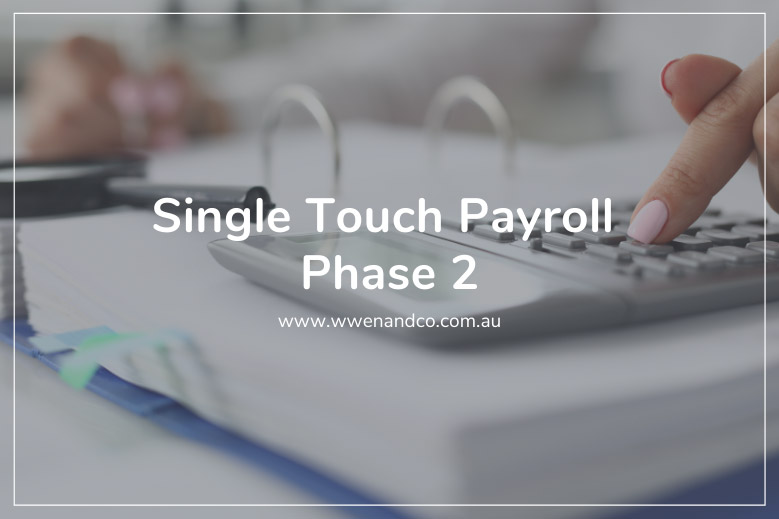Single touch payroll regime

In the May 2019 Federal Budget, the Government announced that Single Touch Payroll (STP) would be expanded to include additional information, building on the first stage of STP which was made compulsory for most employers from 1 July 2019.
For background, the STP regime is a government initiative which is designed to reduce an employer’s burden when reporting to Government agencies such as the ATO. Under the regime, employers report employee payroll information to the ATO each time they are paid via STP-enabled software.
Start date for STP 2
The start date for Phase 2 reporting was 1 January 2022, however the ATO has advised that employers who provide the additional reporting required under Phase 2 by 1 March 2022 will be accepted as having met the deadline.
Digital service providers (DSPs) can apply for a deferral if they need more time to make changes and update their solutions. Such a deferral then automatically applies to customers of that provider. For example, Xero have advised that they have been granted a deferral until 31 December 2022. This means that all customers using Xero Payroll will also have until that date to report their first STP Phase 2 pay run. Check with your provider if a deferred start date applies.
For businesses that need more time to transition, you may apply for an extension beyond your software provider’s deferral. Registered accountants and bookkeepers will also be able to apply on your behalf.
On the compliance front, under Phase 2, genuine reporting mistakes will not be penalised in the first year until 31 December 2022.
Benefits for employers
1. TDN Declarations
Employers will no longer need to send employee TFN declarations (they will still need to be collected and filed in employee records, however).
2. Closely held payees
For businesses using concessional reporting, such as is the case for closely held payees, this can be communicated through income types.
3. Lump Sum E Payments
When making Lump Sum E payments, employers won’t need to provide Lump Sum E letters to employees.
4. Payroll Data Integrates with Services Australia
Payroll information employers provide to the ATO will be shared in near real-time with Services Australia, who can use it to streamline requests.
What isn’t changing?
- The way you lodge, pay and update events
- The due date for lodging events
- The types of payments that are needed
- Tax and super obligations
- End of financial year finalisation event requirements
In practice
Once your STP 1 solution is upgraded to offer phase 2 reporting, you can transition at any time throughout a financial year. The way you transition from STP 1 to STP Phase 2 reporting will depend on your circumstances and the solution you use.
You should follow your digital service provider’s instructions to upgrade your solution.
- Checklist
- Commence reporting from 1 March 2022
- No penalties for genuine mistakes apply until the start of 2023 (the main thing is to commence reporting)
- Consult with your existing STP 1 provider about the transition to STP 2
- Seek input from your accountant or bookkeeper around the reporting itself
STP 2 is not just a software upgrade
The sheer volume of additional data is perhaps the most notable feature of STP 2. Phase 2 requires employers to develop an understanding of what data is required, in the multitude of STP 2 labels and codes in order to properly drive STP 2 software.
All told, there are 16 new reporting labels and approximately 100 different codes and reporting options. STP2 reported data will help shape employee social security, Child Support Agency and income tax outcomes.
It may the case that the complexities around STP 2 will be too great for many small business owners, and they will need input of their accounting or bookkeeping advisor.

